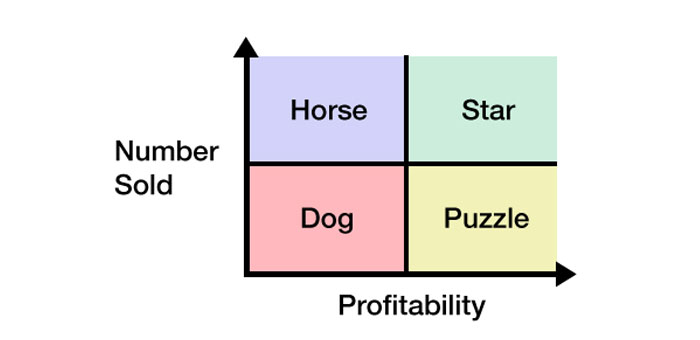Menu engineering is the study of the profitability and popularity of menu items and how these two factors influence the placement of these items on a menu. The concept of menu engineering is not based on random decision making; the idea was brought to the restaurant industry by Professor Donald Smith of Michigan State University.
While menu engineering is most often mentioned relating to restaurant menus, the concept of menu engineering is equally applicable to a food truck’s menu board. To start menu engineering your food truck menu, you will need to do a little math to determine the contribution margin and popularity of each item.
Food Truck Menu Engineering
Contribution Margin = Menu price – food cost
If a menu item’s contribution margin is greater than the average contribution margin for the entire menu, it receives a rating of “H” indicating that it has an above average contribution margin.
Example: Take the sum of CMs on your menu, for our example we’ll use $30. Now take the number items on the menu (our example is 10). Now divide 30 by 10 to get an average CM of $3.
If a menu item has a contribution margin of $4.00 it is given an “H.” If a menu item had a contribution margin of $2.00 it would receive a “L.”
Demand = Number of items sold of a particular menu item/total number of menu items sold
If a menu item’s percentage of sales is greater than the average sales percentage for the entire menu, it receives a rating of “H” indicating that particular item has a higher sales percentage than the demand mix.
Example: If there are 10 items on the menu, the demand mix would equal 1/10 X .70= .7 or 7%. Any menu item with a sales percentage equal to or greater than 7% would receive a rating of “H.” Any item with a sales percentage less than 7% would receive a rating of “L.”
The next step in menu engineering is to classify each item on your menu. All menu items can now be classified into four types using the H&L they’ve received for CM and D.
HH = Stars
These are premier items of the menu. They are relatively popular and generate above average profits per sale.
- Give high menu visibility. The menu can be a great sales tool. Customers tend to order items which “stand out”. Make sure your gold items present themselves well on your menu.
- Test for price elasticity. Be proud of gold items. If the customer is willing to pay more without affecting your total demand, logic says, increase the price.
- Have the service window staff suggest these items when asked by customers.
HL = Horses
These items provide a large number of sales while actually doing very little in helping your profit compared to the Stars. They are good candidates for inventory control.
- Don’t offer these items as a special.
- Maintain low menu visibility. Try to hide these items on the menu.
- Reduce portion sizes slightly. This will reduce food cost, and in turn help to increase contribution margin. This can sometimes turn a horse into a star.
- Find alternative ingredients. See if less expensive ingredients can be utilized without sacrificing quality.
- Test for price elasticity. Will raising the price significantly reduce demand?
LH = Puzzles
These are the most misunderstood items on your menu. They manage to make above average contribution margin, but are weak in demand. So why aren’t they selling well and how can you increase demand without sacrificing the high profitability?
- Offer as daily specials. A quick and easy way to attract consumer attention and increase demand is to offer an item as a “Special.”
- Give the item high menu visibility. Make it “stand out” on your food truck menu.
- Reduce the price. The item may be overpriced.
- Drop from the menu if it is difficult to prepare.
LL = Dogs
These items are your poorest performers and may need to be dropped from the menu entirely.
- Drop from the menu. These items may be nothing more than dead space on the menu and in the truck. By dropping them you can free space, reduce clutter, and concentrate on more profit bearing items.
- Rename and describe to make more attractive. A catchy name and description may be all it takes to increase demand and turn a Dog into a Horse or even a Star.
RELATED: Food Truck Menu Pricing
The Bottom Line
A well-executed food truck menu engineering effort can take a week to do. This is time well spent and can increase a food truck’s profits by 10% to 15% on an ongoing basis.
Have you used menu engineering on your food truck? How did it work for you? You can share your thoughts in the comment section below or on social media. Facebook | Twitter




